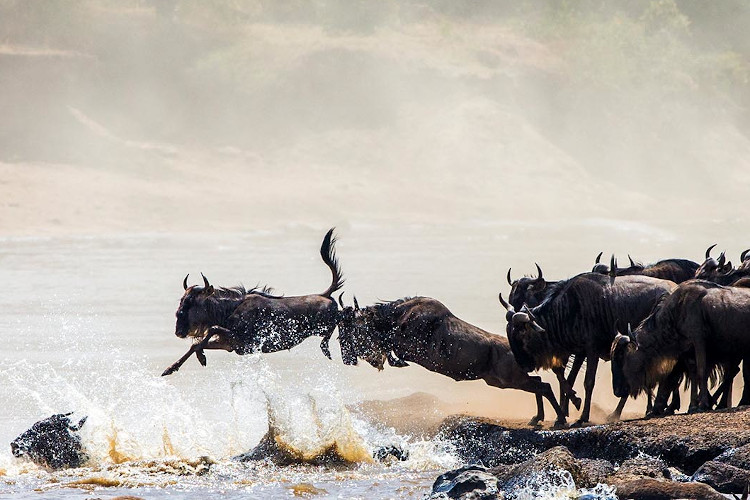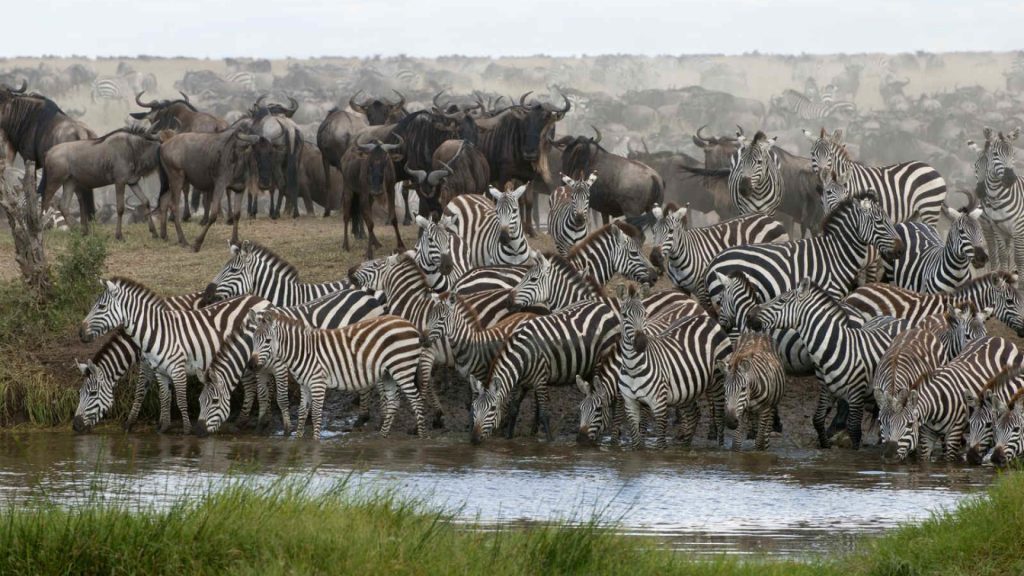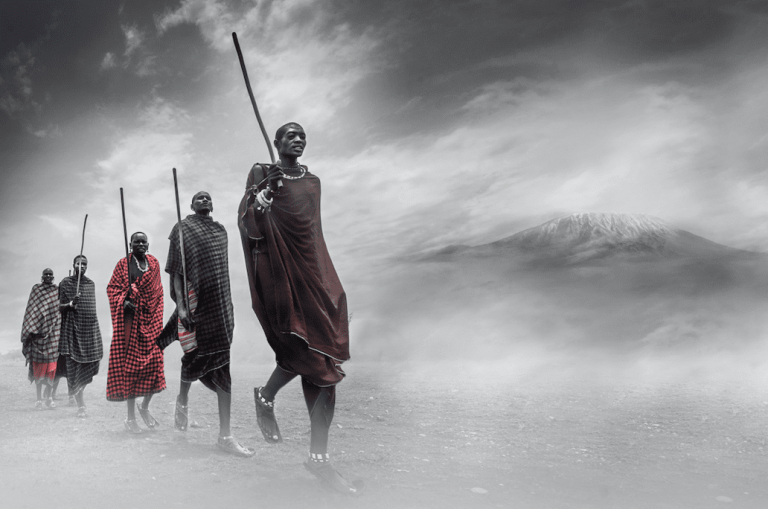December-April – Calving and lots of predatory action
As wildebeest, zebra and other ungulates are so many, and give birth to so many calves, the spectacle works as a magnet for predators. As early as March or April the herd may move again in search of greener pastures. Seeing the actual migration in this period is more difficult, but chances are that you will encounter very large herds on the move.
May-July: 800km journey begins
This is the period that the wildebeest, after having feasted on the short green grasses of the southeastern Serengeti and after having giving birth to their offspring, start getting ready for their 800 kilometer long trek. The actual starting date may be anytime between late April and early June. This is the time to you may have the privilege to see one of the greatest natural phenomena in the world: more than a million marching animals in a column up to 40 kilometers long. During the migration, the herd will move towards the Western Corridor, where they will face the first major obstacle: crossing the Grumeti River. Many animals don’t survive the crossing as they are being awaited by the area’s population of oversized crocodiles ready to feast. The herd may congregate on the southern bank of the river and stay there for up to two weeks before crossing the river.
August-September: Mara River Crossing
When the Grumeti River obstacle has been taken, the herd moves further north and starts crossing the next big hurdle, the Mara River, in July or August. The Mara River crossing is where so many iconic Great Migration photos have been taken. After this crossing the herd flocks to the northwest plains and Masai Mara National Reserve in Kenya. Smaller herds of wildebeest (well consider small… herds may count up to between 500 and thousands of individuals) frequently cross the Mara River, back and forth, for no apparent reason. This is an excellent time to stay at one of the Serengeti Mara camps.
October-November
Crossing the Mara River northbound means that, at one point, the herd needs to cross the river one more time before commencing the trek back in a southerly direction. This usually happens in October, but sometimes earlier. In this period the herd will cross the northern plains and Lobo area. This section of Serengeti National Park is little-visited, so if you are looking to see the migration in relative quietness, this would be the time. The wildebeest return to the short- grass plains and calving ground around Ndutu in late November. And from here, the Great Migration starts all over again.




